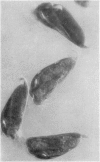Abstract
The rumen ciliate Epidinium ecaudatum was cultured for 6 months in the presence of two strains of bacteria, starch, alfalfa, linseed oil meal, and buffered saline. The cultures required daily transfer and addition of fresh substrate. The protozoan degraded starch, soybean oil meal, linseed oil meal, and cottonseed oil meal, and the fermentation end products from the breakdown of starch were acetic and butyric acids with traces of formic, propionic, and lactic acids, carbon dioxide, and hydrogen. The relationship of E. ecaudatum to other species of rumen oligotrichs and bacteria is discussed.
Full text
PDF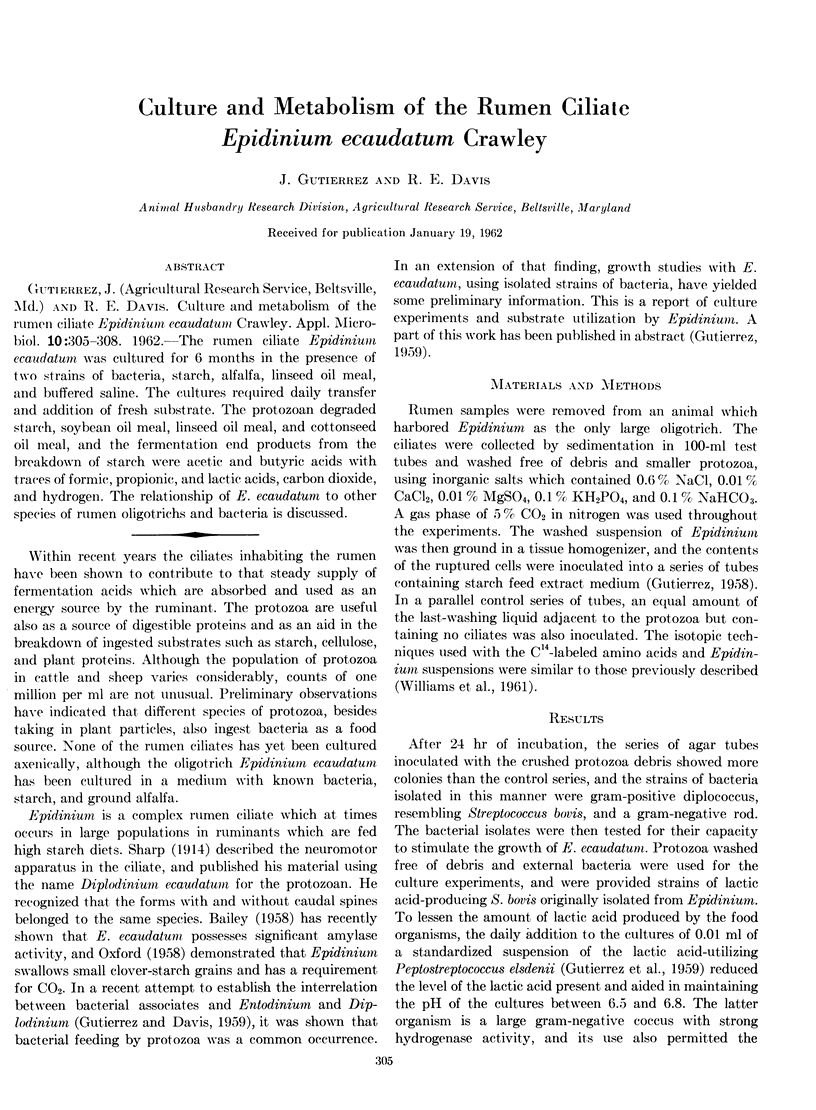
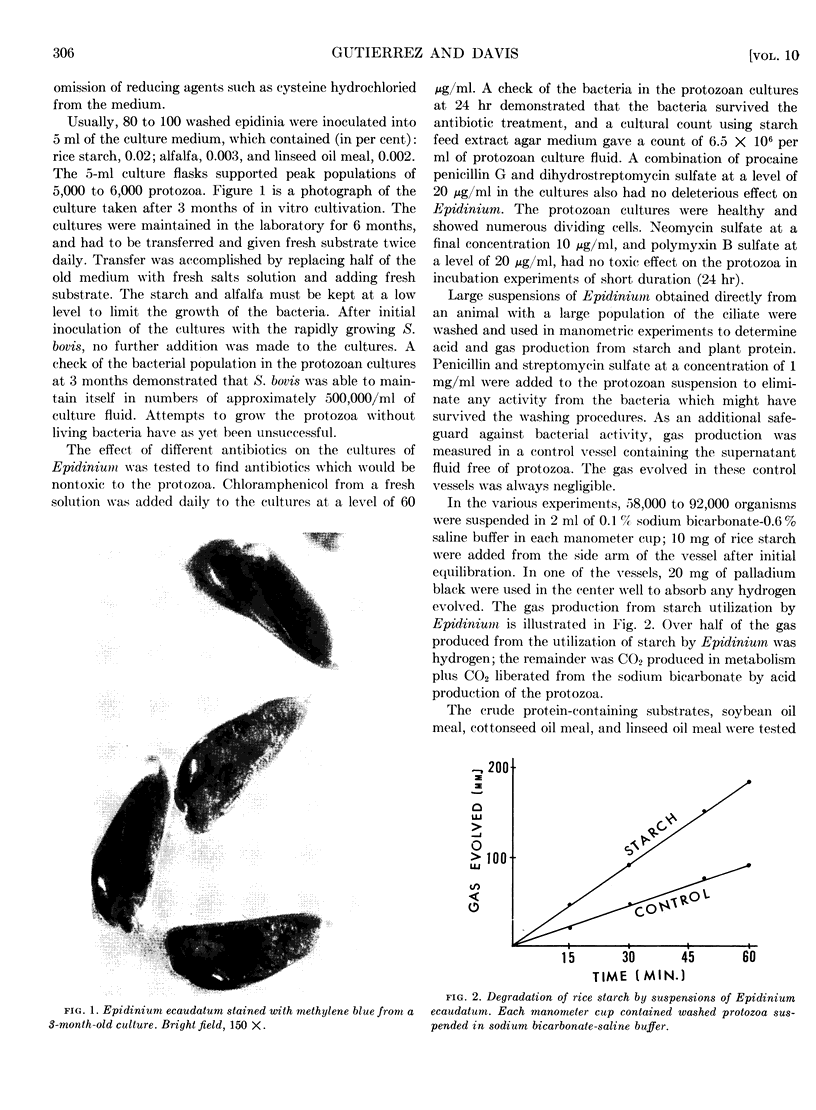
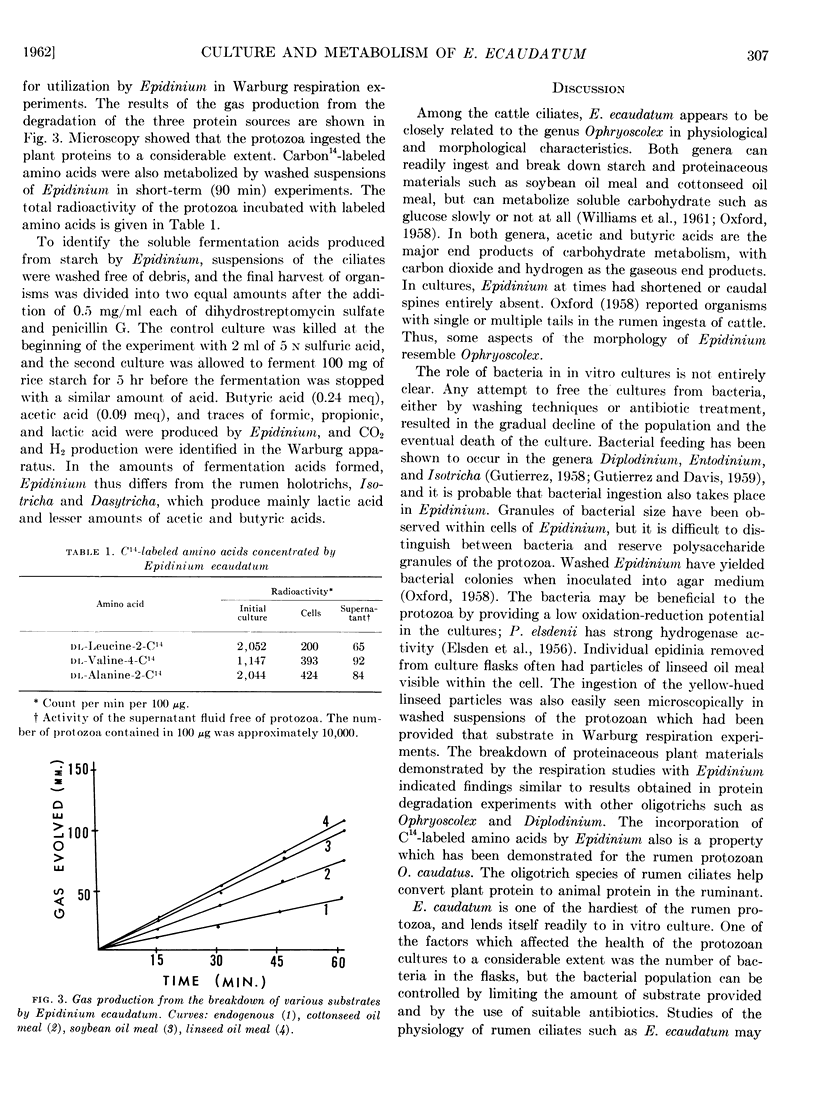
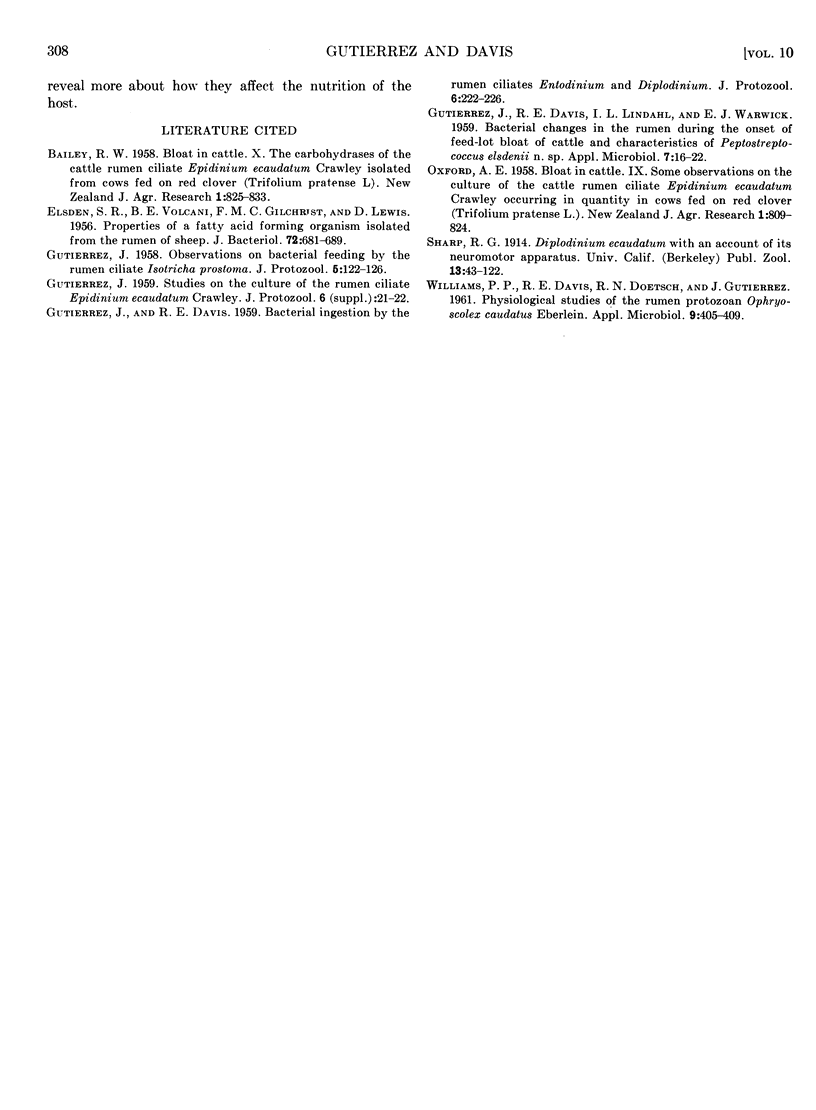
Images in this article
Selected References
These references are in PubMed. This may not be the complete list of references from this article.
- ELSDEN S. R., GILCHRIST F. M., LEWIS D., VOLCANI B. E. Properties of a fatty acid forming organism isolated from the rumen of sheep. J Bacteriol. 1956 Nov;72(5):681–689. doi: 10.1128/jb.72.5.681-689.1956. [DOI] [PMC free article] [PubMed] [Google Scholar]
- GUTIERREZ J., DAVIS R. E., LINDAHL I. L., WARWICK E. J. Bacterial changes in the rumen during the onset of feed-lot bloat of cattle and characteristics of Peptostreptococcus elsdenii n. sp. Appl Microbiol. 1959 Jan;7(1):16–22. doi: 10.1128/am.7.1.16-22.1959. [DOI] [PMC free article] [PubMed] [Google Scholar]
- WILLIAMS P. P., DAVIS R. E., DOETSCH R. N., GUTIERREZ J. Physiological studies of the rumen protozoan Ophryoscolex caudatus Eberlein. Appl Microbiol. 1961 Sep;9:405–409. doi: 10.1128/am.9.5.405-409.1961. [DOI] [PMC free article] [PubMed] [Google Scholar]



